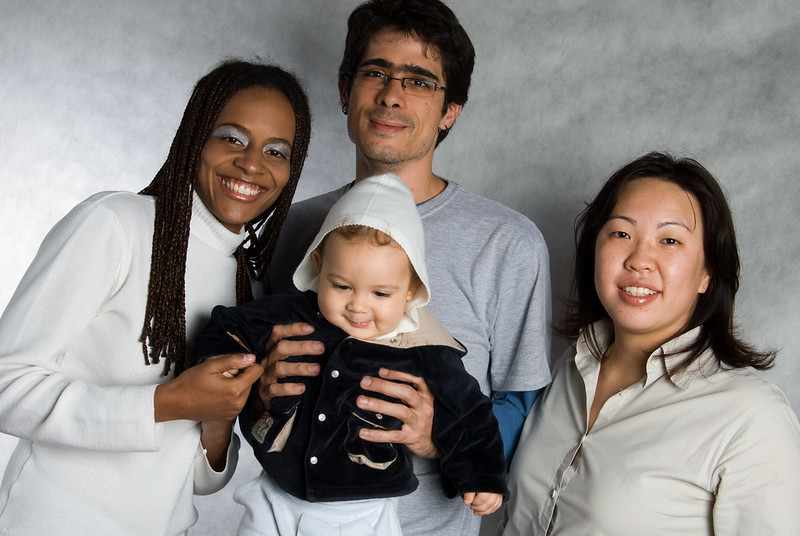Freddy McConnell – a transgender man who made history and headlines in 2018 when he gave birth to a baby boy – recently lost a high court battle to be named as ‘mother’ on his child’s birth certificate. Legally speaking, Freddy is a man – and his story highlights the struggle of the legal world to keep pace with the rapidly changing face of the global family. His journey is documented in the film Seahorse: The Dad Who Gave Birth.
Across the globe, the traditional nuclear family model is changing forever. We take a look at how family makeups and dynamics are shifting, and what’s behind some of these trends.
Families are getting smaller
In 2017, the US experienced its lowest ever number of births per 1,000 women at 60.3. Simultaneously, the average age of a woman at the birth of her first child has been rising for decades – from 22.7 in 1980, to 26 in 2013.
Aside from the increased number of women who want to pursue their careers before they consider starting a family, tough economic times, student debt and the soaring cost of education have all meant families on the whole are getting smaller, at least in the USA. Indeed, it seems the ‘middle child’ might be a dying breed.
Thanks to better sex education, teen pregnancies are also going down – and with access to new and ever-improving fertility services such as IVF and egg freezing, women feel more confident about their chances to have a baby or two later in life.
Even in remote and rural areas, women are becoming more empowered
From female farmers in Brazil to the Indian wedding crashers who seek to prevent young girls being forced into arranged marriages, there are movements around the globe underway aimed at giving women the rights they deserve. While progress may feel slow, and many of the customs still prevalent in developing countries might seem antiquated and even outrageous to us, there is an undeniable change taking place.
And as more women stand together and demand their human and reproductive rights, the ‘traditional’ family model will continue to evolve.
Divorce is on the decline
While this might be a surprising one for many readers – as the film, TV and entertainment industry at large hasn’t quite caught up with the trend yet – divorce is on the decline. Indeed, the US divorce rate dropped by 18% from 2008 to 2016.
What’s behind this trend? Millennials, of course! Unlike the Baby Boomers, Millennials (and many of the younger members of Gen X) are approaching marriage quite differently from their parents – waiting until they are more established in their careers and financially independent to get hitched, and living with their partners longer before they do decide to get married or not.
Some couples are also choosing not to get married at all, deciding to cohabit with their partners and raise children out of wedlock. There is also evidence that millennials simply take marriage more seriously than their older counterparts.
Another contributing factor may be the ongoing decline of organized religion in the US and the developed world at large. In the UK, more than half of citizens now say they have no religious affiliation. To put it bluntly, people no longer feel they have to get married just to have sex – meaning they can play the field and choose a partner with whom they are compatible on all fronts before embarking on marriage.
The traditional family model no longer exists
It is estimated that in the US, only 3 out of 10 children now live in what we’d call a traditional family – with two parents who are both in their first marriage. More than half of children will spend at least part of their lives in a single-parent household.
There has also been a significant rise in the number of multigenerational families, especially in cities where rents and housing prices are steep. According to the Pew Research Center, a record high of 64 million people, or 20% of the US population, were living in multigenerational homes in 2016.
Acceptance and support of same-sex marriages is growing
In 2007, 54% of Americans were against same-sex marriage. By 2017, only 32% were opposed to it. At the same time, concerns that children raised by same-sex parents would suffer psychologically or developmentally are quickly dissipating, as it becomes evident that they are just as well-adjusted as their peers. Interestingly, children raised in same-sex households also seem to do better in school.
With all these factors coming into play, it’s hardly surprising that our old ideas of what constitutes a ‘normal family’ are disappearing fast. What will never change, of course, is the value of a stable support network at home – whatever that might look like!
Related Posts












